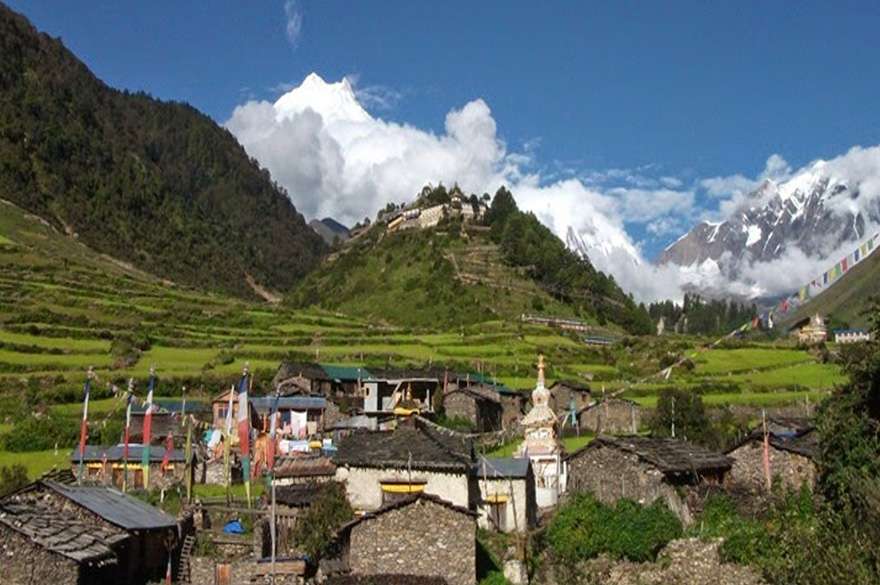Tsum Valley Trek: A Journey Into the Hidden Himalayan Culture

Strong 8k brings an ultra-HD IPTV experience to your living room and your pocket.
Explore the quiet trails, ancient monasteries, and untouched culture of Nepal’s hidden gem. Tsum Valley is more than just a trek it is a spiritual walk through time.
As a guide, I have walked many trails across Nepal, but the Tsum Valley Trek holds a special place in my heart. It is not the most popular trek, and that’s what makes it special. You don’t come across big crowds or modern lodges. Instead, you find yourself walking through small stone villages where people still live like they did generations ago. Time feels slower here, and every day brings something new to learn.
Tsum Valley is located in the northern part of the Gorkha district, near the Tibetan border. It’s part of the Manaslu Conservation Area, but it feels completely different from the main Manaslu Circuit. The region was only opened to trekkers in 2008, and that’s probably why it has stayed so raw and pure. The people here are called Tsumbas. Their lifestyle, language, and customs are influenced by Tibetan Buddhism, and you’ll feel that as soon as you enter the valley.
Cultural Richness You Can See and Feel
One of the most unique things about Tsum Valley is its deep connection with Buddhism. You’ll see it in every part of the journey colorful prayer wheels, carved mani stones, and ancient monasteries perched on hills. Rachen Gompa and Mu Gompa are two of the oldest and most spiritual places in the region. When I entered Rachen Gompa for the first time, I saw young monks chanting in a dimly lit room filled with butter lamps and old scriptures. It felt peaceful, almost like time stood still.
Locals still follow age-old customs. They greet you with warm smiles, often invite you in for a cup of salty butter tea, and love to share stories if you show interest. One elder I met in Chhokang Paro village told me how the valley used to be completely self-reliant. They grew their own crops, made their clothes, and traded with Tibet. Today, those traditions still live on, but slowly things are changing with the arrival of trekkers.
The Landscape is Real and Raw
Tsum Valley may not have the highest peaks like the Everest or Annapurna regions, but it offers a different kind of beauty. You’ll walk through pine forests, cross suspension bridges, and see waterfalls cutting through rocky cliffs. The Ganesh Himal range appears from time to time, especially on clear mornings. As you gain altitude, the landscape becomes drier and more open. Yaks graze near the trails, and tiny fields of barley and potatoes pop up on terraced hillsides.
There were days when I didn’t see another trekker for hours. That silence gives you space to think, breathe, and connect with your surroundings. It’s a different feeling compared to the busy trails of other regions.
With or Without a Guide?
Tsum Valley is a restricted area, which means you need a special permit to go there and you can’t get it on your own. You must be in a group of at least two and hire a registered guide. From what I’ve seen, having a guide is more than just a rule here. The villages are far apart, the trails can be confusing, and facilities are basic. There are fewer signs, fewer lodges, and often no phone signal. Having a guide ensures you don’t get lost, and also helps in translating and understanding local culture.
I have helped many trekkers make real connections with locals. One time, we joined a family’s prayer session after dinner. They sang Buddhist chants softly, with a small fire burning in the corner. Without a guide, moments like this are easy to miss.
Food, Stay, and Daily Life on the Trek
Don’t expect luxury here. But you’ll find what you need. Teahouses are basic but comfortable. Most of them are family-run. You’ll be served simple but warm meals dal bhat, potatoes, tsampa, and sometimes fresh yak cheese if you’re lucky. The further you go into the valley, the fewer the options. But that’s also what keeps this place authentic.
You’ll mostly sleep in wooden rooms with thick blankets. Nights can get cold, especially after Chhokang Paro, so packing a good sleeping bag is important.
Best Time to Visit
The best time to do the Tsum Valley Trek is during the spring (March to May) and autumn (September to November). During these months, the weather is clear, and the trails are dry. In spring, the rhododendrons bloom along the lower trails. In autumn, the skies are often crystal clear, offering wide mountain views.
Why Tsum Valley is Worth It
This trek isn’t for someone who’s just chasing mountain views. It is for those who want to feel something more. You won’t just take photos you will take memories that stay with you long after you return. The people, the silence, the stories they leave an impression.
Tsum Valley taught me to slow down. To appreciate not just where I was going, but everything I passed along the way. If you’re looking for a real cultural experience in Nepal, away from the busy trails, this trek is worth every step.
Note: IndiBlogHub features both user-submitted and editorial content. We do not verify third-party contributions. Read our Disclaimer and Privacy Policyfor details.






